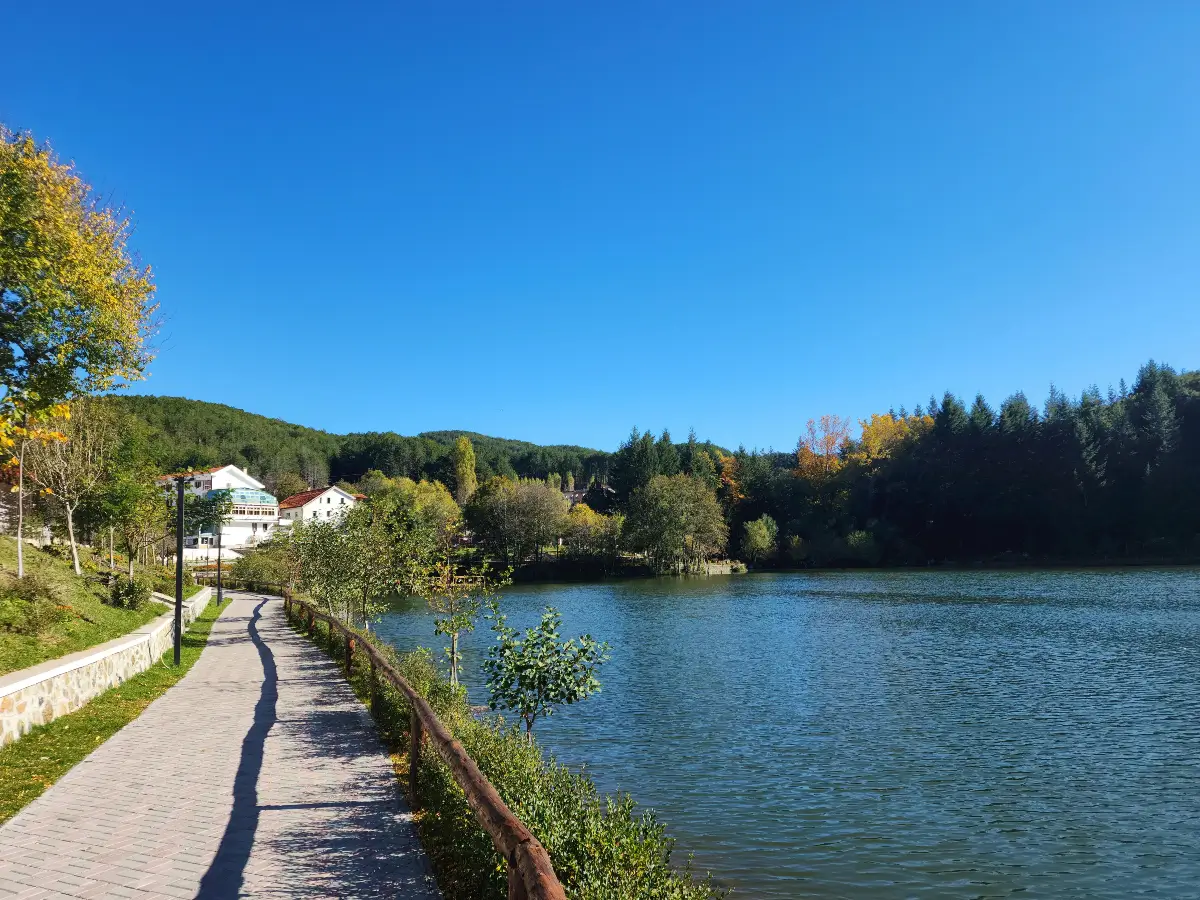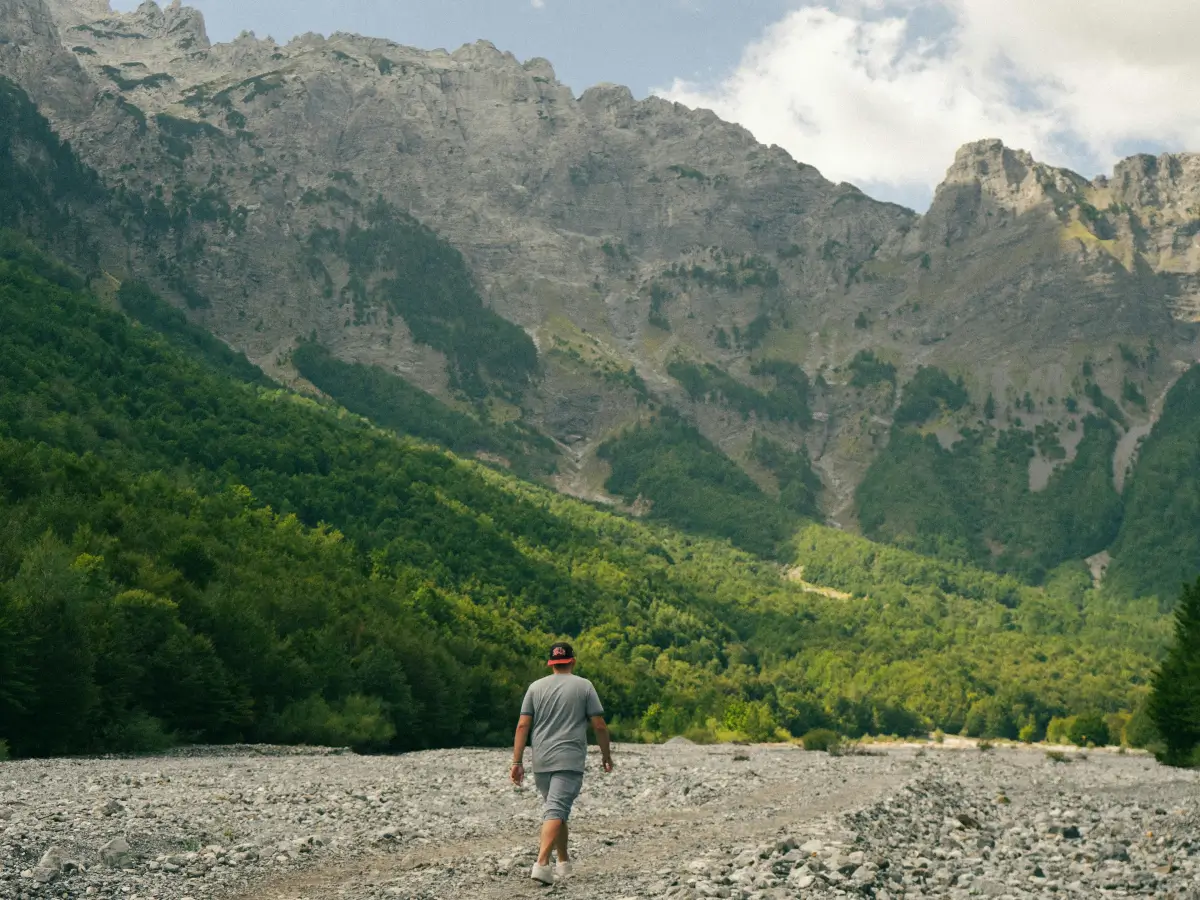Albania is a country where nature speaks loudly — in its jagged peaks, fast-flowing rivers, and clear coastal waters. Tucked between Southern and Southeastern Europe, Albania may seem small on the map, but its geography is surprisingly rich, varied, and dramatic.
Understanding Albania’s geography means understanding its identity. The terrain has shaped not only how people live and travel, but how they build, eat, and connect to their land. From towering mountains to deep river valleys and a sparkling coastline, here’s a look at what defines Albania’s natural landscape.

Mountains that dominate the north and east
Mountains cover about 70 percent of Albania’s territory. The country is part of the Dinaric Alps, which stretch along the western Balkans. In the north, the Albanian Alps (also known as the Accursed Mountains) form a wild, rugged range that is among the most beautiful and untouched in Europe.
The central and eastern parts of the country are home to highlands and rolling mountain systems like the Korab, Shebenik, and Gramoz ranges. Mount Korab is Albania’s tallest peak, reaching 2,764 meters and forming the natural border with North Macedonia.
These mountain regions are known for:
-
Steep terrain and narrow valleys
-
Isolated villages and traditional stone homes
-
Snowfall in winter and cool summers
-
Popular hiking routes and alpine biodiversity
The mountains also play a crucial role in Albania’s cultural divide between north and south — with dialect, customs, and family structures evolving differently based on geography.
Rivers that carve through valleys and power the nation
Albania is rich in rivers, many of which begin in the mountains and flow toward the Adriatic or Ionian Seas. These rivers are not only essential for irrigation and agriculture — they also power the country’s electricity grid through hydropower.
Some of the most important rivers in Albania include:
-
The Drin – The longest river in the country, it supplies major hydropower stations in the north
-
The Vjosa – One of the last free-flowing wild rivers in Europe, flowing through pristine valleys in the south
-
The Shkumbin – A central river with cultural significance, often seen as the boundary between northern and southern dialects
-
The Semani – Formed by the union of the Osum and Devoll rivers, key for central Albania’s agriculture
-
The Buna – A short river that links Lake Shkodra to the Adriatic and forms part of Albania’s northern border
These rivers support agriculture, sustain biodiversity, and influence where towns and cities developed historically.
Coastlines that offer Mediterranean beauty and diversity
Albania’s coastline stretches for over 450 kilometers, divided between two seas — the Adriatic in the north and the Ionian in the south. Each offers a completely different experience.
The Adriatic Coast features long sandy beaches, lagoons, and wetlands. It’s flatter, with warmer shallow waters, and is home to growing tourism destinations like Durrës and Velipoja.
The Ionian Coast, by contrast, is rocky, dramatic, and scenic. Here, steep cliffs drop into deep blue water, and small bays are hidden between rugged hills. Famous stops like Dhërmi, Himara, and Ksamil are found here, often compared to the coasts of Italy or Greece — but still largely undeveloped.
This coastal diversity influences not only tourism but also fishing, climate, cuisine, and regional culture.

A land shaped by contrasts
Albania’s geography creates strong contrasts within short distances. You can drive from alpine forests to olive groves, from freshwater lakes to turquoise beaches in a matter of hours. These contrasts shape:
-
Microclimates, with snow-covered villages near sunny vineyards
-
Flora and fauna, with a mix of continental and Mediterranean species
-
Regional identity, where geography influences dialect, food, and architecture
-
Travel and infrastructure, as mountains still isolate certain regions
This natural diversity is one of the reasons Albania feels so rich in culture, despite its compact size.
Geography as a foundation of identity
Albania’s geography is not just physical — it’s emotional. It has shaped how people survive, how they organize society, and how they interact with their environment. The mountains taught independence. The rivers brought life to dry lands. The coastline opened doors to the outside world.
Understanding the land is key to understanding the Albanian spirit — proud, rooted, adaptable, and always deeply connected to place.